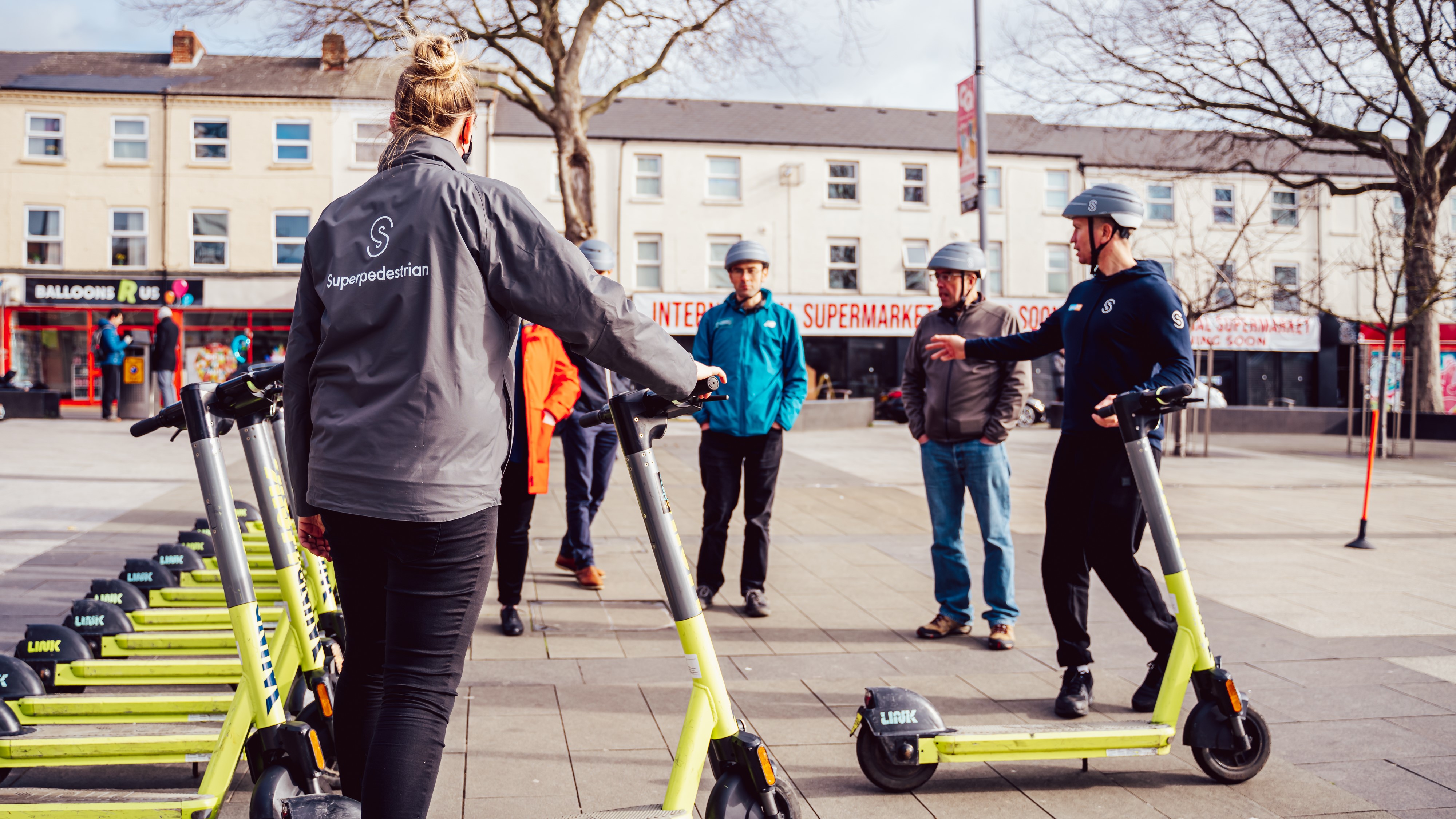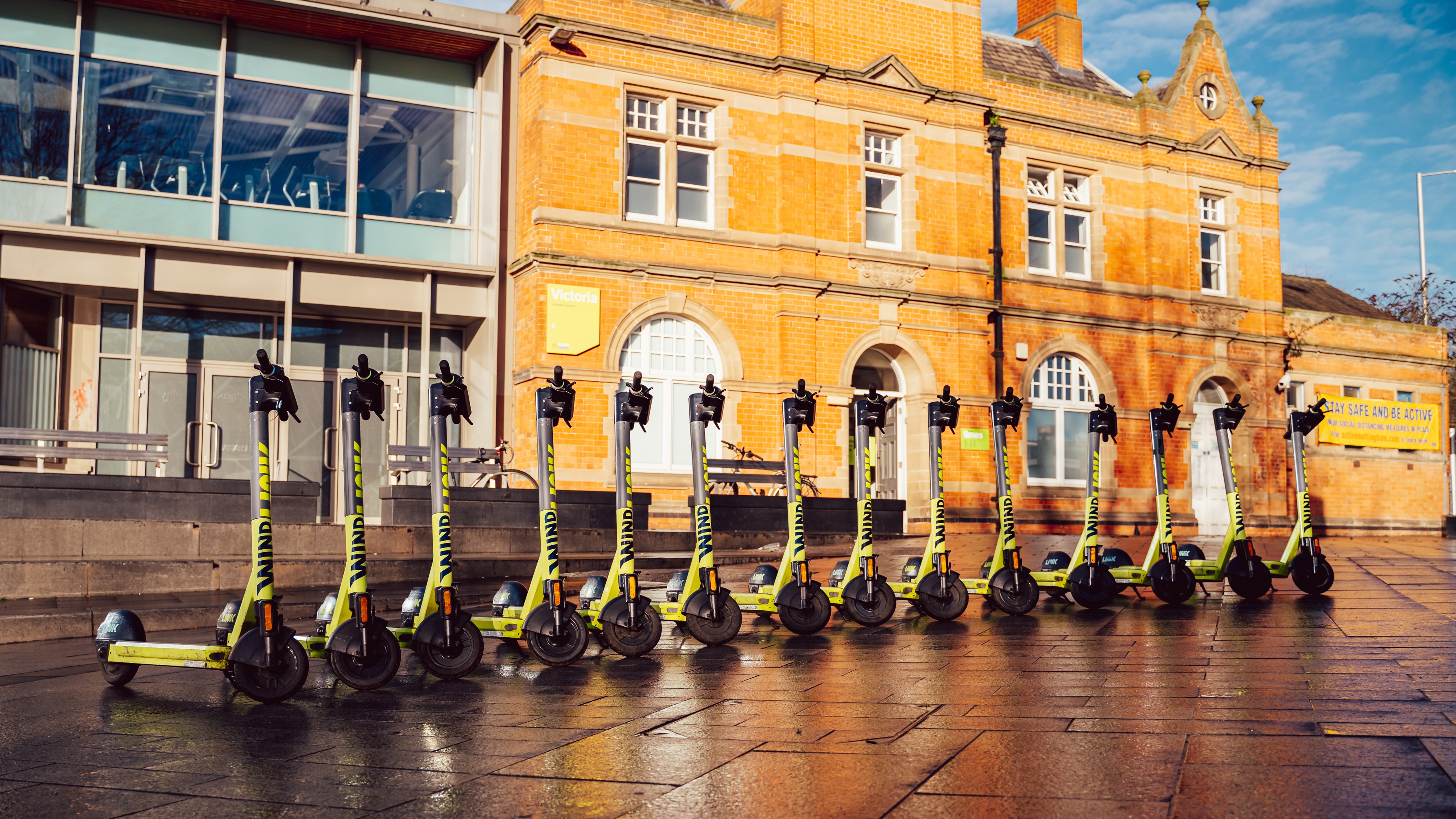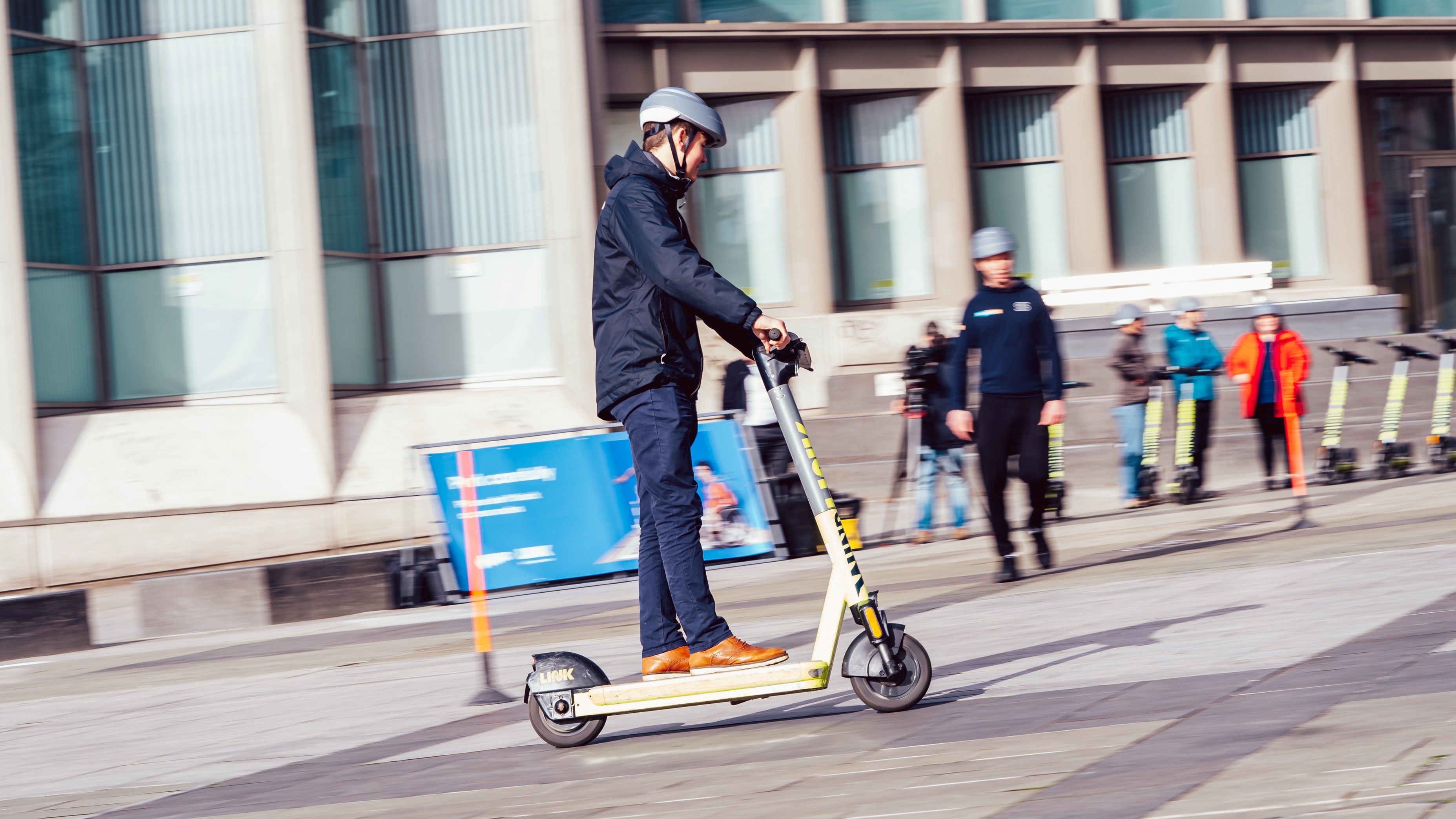The hidden (and not so hidden) tech making electric scooters safer

Electric scooters are a lot like electric bikes in that they’re super convenient, take the strain out of getting from A to B and can often be a sensible alternative to jumping in the car. However, they both share an issue that revolves around helmets. Let’s face it, the humble safety helmet might be a great and proven life-saving invention, but it’s not exactly convenient to carry around.
Fast forward to Nottingham, UK, where TechRadar was recently invited to try out the Superpedestrian electric scooter service being trialled and get the benefit of a safety training session from Scoot Fit. We even got given a collapsible safety helmet, which certainly helps on the convenience front.

Superpedestrian is a tech company that originated at Massachusetts Institute of Technology in 2013. Since then it's gone on to build up a shared mobility infrastructure scheme, with its main focus being the e-scooter.
To date, Superpedestrian has rolled out sharing schemes in 10 countries. Central to the project is the scooter itself, which in this case is the LINK. It’s a beefy machine that makes most commercially available scooters look puny by comparison, especially since the platform where you put your feet is up to 20% wider than average. The LINK has clearly been built to last, and that's just as well when it’s getting heavy use in a busy city.
It has impressive range too (up to 60 miles), but perhaps its most interesting feature is its Pedestrian Defense system, which dynamically detects and corrects any unsafe riding behaviour. For example, if you ride the LINK anywhere it shouldn't be going, the software will automatically stop you from doing so by taking preventative measures.

Could that be a turn-off for folks who want to ride them wherever and whenever they like? Clearly Superpedestrian doesn't think so, and it may also go some way to reassuring skeptics about the safety issues associated with e-scooter riding. It certainly seems like a good idea, both for riders and other road users. While the LINK is limited to 15mph (or 8mph for new riders), it could be a potential threat if ridden carelessly.
Building confidence
Superpedestrian is also running free drop-in sessions for people who are interested in getting to grips with an electric scooter, but doesn't feel safe and confident on the roads. Right now the average scooter rider seems to be at the younger end of the spectrum. However, that could change if rider awareness lessons become commonplace, and those that are already running seem to attract a much more diverse group of people.
Sign up for breaking news, reviews, opinion, top tech deals, and more.
The sessions are informal, and although they're quite intensive (you only have to through 20-minute bite-sized training spurts to get the hang of things), they're not as stressful as a driving test. Ours was led by James Rodger, chief instructor at Scoot Fit, whom Superpedestrian has called in to help. We received a great introduction to the LINK and how to get the best from its basic controls. The scooter is much like other rental models, in that it is quick and easy to use, but the training is a great primer on how to get that little bit more from the experience.

To be honest there’s not a whole lot to using an electric scooter. It’s easy to imagine some seasoned riders scoffing at these informal training sessions. However, if you’ve never ridden one the guidance proves invaluable as we found after talking to a group of older e-scooter converts. They were not only much more confident and understanding of the LINK after a session, but also seemed fully converted to the electric scooter cause.
It’s easy to see the appeal too. The LINK is limited to 15mph, which doesn't sound that fast, but it certainly beats walking. Indeed, you can get around Nottingham in no time using the scheme. This being a lively university city the scooter appears to be frequently used by students, but that could soon change.
Based on what we saw during our training sessions, the age range of users has the potential to be much wider, with a lot of interest being shown from the slightly more mature folks who’d turned up.
Building skills
The guidance from Rodger revealed how to best navigate the potholes and ruts found around the city. Bending your knees slightly while you’re in motion can partially soak up any bumps, while keeping your feet parallel on the scooter's wide platform helps your posture.
More importantly, Rodger gave an insight into how to perceive potential safety threats. Much of the training revolves around awareness. Some might say it’s just common sense, but the sessions are really useful. By the end of your training everything makes that little bit more sense.
The controls themselves are a piece of cake to master with a throttle control on the right of the handlebars, a bell on the left and brake levers on both sides. And you get that collapsible helmet for free, too.

“Our aim is to create safe streets for everyone and we recognise that more work is needed to enhance rider behaviour now, as well as educating the next generation of e-scooter users. We teamed up with Scoot Fit in 2021 and since then we have helped to deliver training programmes to over 9,000 students and teachers in 41 schools in England,” says Haya Verwoord Douidri, Vice President, Global Market Development, Policy and Strategy at Superpedestrian.
“Shaping a safer and healthier environment is a key priority for Superpedestrian and working together with Scoot Fit to provide free safety training will both develop the skills of current users, as well as encourage new users to consider a new way to move - further boosting travel choices for the community.
Our data has already shown that in January alone, our shared e-scooters replaced more than 27,500 miles of short car journeys in Nottingham, bringing benefits in improved air quality and reduced congestion to all residents.”
What's next
Whether or not the Nottingham pilot will become a long-term electric scooter-sharing scheme is complicated and involves local and central government decision-making. It will also require further investment from Superpedestrian. The same factors could also determine if such schemes will be rolled out to other cities in the UK (and potentially beyond).
Nevertheless, knowing riders are that little bit more aware of any potential dangers and have the ability to take preventative measures with the help of some clever on-board tech can’t do any harm in the meantime.

Rob Clymo has been a tech journalist for more years than he can actually remember, having started out in the wacky world of print magazines before discovering the power of the internet. Since he's been all-digital he has run the Innovation channel during a few years at Microsoft as well as turning out regular news, reviews, features and other content for the likes of TechRadar, TechRadar Pro, Tom's Guide, Fit&Well, Gizmodo, Shortlist, Automotive Interiors World, Automotive Testing Technology International, Future of Transportation and Electric & Hybrid Vehicle Technology International. In the rare moments he's not working he's usually out and about on one of numerous e-bikes in his collection.